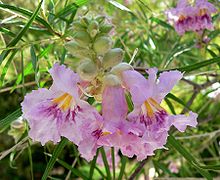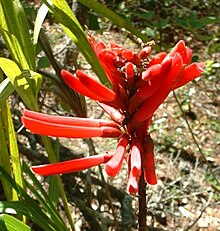Hi Everybody!!
Here is the golden "Little King". I have asked him to show us what to do in this high heat: Chill Out! The old King is a master at chilling out. Try to find somewhere cool and stay out of the heat of the day. I began my summer project on June 1, inside where it is cool. Happy to report I finished it today! I built and moved into my new apartment. I am showing the photos for the Fourth of July weekend. Here is a sneak peak of the new bedding, officially tested by the Little King! Your photostudy tonight is a walk around the grounds of Kates Cabin Bird Sanctuary to see the Hot Bloomers in the yard. Enjoy!
The Guard Dog "On Duty" 24/7
Good Morning Glory (Heavenly Blue)
http://en.wikipedia.org/wiki/Morning_glory
Morning glory
From Wikipedia, the free encyclopedia
Most morning glory flowers unravel into full bloom in the early morning. The flowers usually start to fade a few hours before the "petals" start showing visible curling. They prefer full solar exposure throughout the day, and mesic soils. Some morning glories, such as Ipomoea muricata, are night-blooming flowers.
In some places, such as Australian bushland, some species of morning glories develop thick roots and tend to grow in dense thickets. They can quickly spread by way of long, creeping stems. By crowding out, blanketing and smothering other plants, morning glory has turned into a serious invasive weed problem.
Ipomoea aquatica, known as water spinach, water morning glory, water convolvulus, ong-choy, kang-kung, or swamp cabbage, is popularly used as a green vegetable, especially in East and Southeast Asian cuisines. In the USA ipomoea aquatica is a Federal Noxious Weed, and can be illegal to grow, import, possess, or sell without permit. However, a market exists for the plant's powerful culinary potential. See: USDA weed factsheet. As of 2005, the state of Texas has acknowledged that water spinach is a highly prized vegetable in many cultures, and has allowed water spinach to be grown for personal consumption, in part because it is known to have been grown in Texas for more than 15 years and has not yet escaped cultivation.[2] Because it goes by so many names, it can easily be slipped through import inspections,[citation needed] and it is often available in Asian or specialty produce markets.
The Cloud Cover of Morning Opens to reveal the Blue Sky
Good morning Lucy!
Good Morning to the Mourning Dove
Waking Up with rosebuds (double pink knock outs)
Down to the creek to see:
Crawfish Chimney
http://www.americaswetlandresources.com/wildlife_ecology/plants_animals_ecology/animals/invertebrates/crawfish.html
There are many species of crawfish in Louisiana, but only a few in America's ... They actually use their legs and mouth parts to dig up mud and make it into a little ...
What are crawfish chimneys? Crawfish chimneys are those "smokestack"-looking things that appear in field and our yards each spring. Everywhere you see one (sometimes a crawfish will make two), there is a crawfish living in a burrow underneath. Their tunnels may extend down into the earth 3 ft or more, sometimes being a single burrow going straight down, but more often being a main tunnel with a couple of side tunnels, each with a room at the end. They are normally full of water.
Sometimes one sees that the color and texture of the chimney mud is different at different levels of the chimney. This is a sign that there are different characteristics of soil layers below the soil. As the crawfish burrows down, it brings up soil from different layers and deposits the pellets of mud in the chimney.
How do they make them? No, they don't have little backhoes or dredges. They actually use their legs and mouth parts to dig up mud and make it into a little ball called a pellet. Each pellet is taken to the surface and put on the surface. The next pellet is set beside the first. This continues, much like a brick layer putting bricks on one layer, then making another layer, etc. until a building is totally bricked. The crawfish makes the chimney out of many, many pellets of mud. Take a close look the next time you see one and you will clearly see this neat system.
Why do they build chimneys? This is not completely known (no one has ever talked to a crawfish), but there are a couple of theories.
The crawfish has to dig its burrow in order to be able to submerge in water beneath the water table. As it does so, it has to do something with the mud. If it takes the mud outside the burrow and crosses the ground to dispose of it, the crawfish will be vulnerable to predators. To avoid that, they learned to build the chimney, thus never leaving the entrance of the burrow. If you ever approach a chimney and the crawfish is visible, you will see how quickly it can fall/scurry back down the tunnel.
Many animals are known to construct their burrows in such a fashion that they enhance the flow of air through the tunnels. It is known that the water in crawfish tunnels may get low on oxygen. It may be that the chimneys help air flow into the burrows so that oxygen can be absorbed in the water.
Deep Shade here on the creek
HOT BLOOMERS:
Crape Myrtles
Lagerstroemia
From Wikipedia, the free encyclopedia
http://en.wikipedia.org/wiki/Lagerstroemia
Lagerstroemia //,[1] commonly known as crape myrtle or crepe myrtle, is a genus of around 50 species of deciduous and evergreen trees and shrubs native to the Indian Subcontinent, southeast Asia, northern Australia and parts of Oceania, cultivated in warmer climates around the world. It is a member of the Lythraceae, which is also known as the loosestrife family. The genus is named after the Swedish merchant Magnus von Lagerström, who supplied Carolus Linnaeus with plants he collected. These flowering trees are beautifully colored and are often planted both privately and commercially. Popular varieties used in modern landscaping include the bright red Dynamite Crape Myrtle, the deep pink Pink Velour Crape and the purple Twilight Crape Myrtle, which also has a bark that changes colors. These trees come in many different hues, as outlined on the Crape Myrtle Comparison Chart.
Potato Vines
How to Grow Potato Vine. Potato vines are not actually potato plants. They are evergreen flowering vines that bloom during the warm months with white flowers ...
Split tailed Kite
Lucy
Lucy (Black Vulture)
Desert Willow
http://en.wikipedia.org/wiki/Chilopsis
Chilopsis
From Wikipedia, the free encyclopedia

A large specimen in flower
Ranging from 1.5 to as much as 8 meters in height, it can have the general appearance of either a shrub or a small tree. The linear curved leaves, ranging from 10–26 cm in length and 2–4 mm broad, aredeciduous.
The generic name is derived from the Greek words χεῖλος, (cheilos), meaning "lip," and ὄψις (opsis), meaning "resembling," referring to theflowers. They occur in a terminal panicle or raceme; the bloom starts in May, and progresses into September, with 2-4 flowers open at any one time. The calyx is about 8–14 mm, slightly inflated, and varying shades of purple, while the corolla is 2–5 cm, and with colors ranging from lavender to light pink. The throat and lower lip has a pattern of yellow ridges and purple lines, and the margins are crinkled. It is pollinated primarily by large bees in the family Apidae, such as carpenter bees, bumblebees, Anthophora, and Centris. Thefruit is a linear "pod" up to 35 cm long, containing numerous winged seeds.
Coral Bean Tree
http://en.wikipedia.org/wiki/Erythrina_herbacea
Erythrina herbacea
From Wikipedia, the free encyclopedia
Erythrina herbacea, commonly known as the Coral Bean, Cherokee Bean, Red Cardinal or Cardinal Spear, is a flowering shrub or small tree found throughout the southeastern United States and northeastern Mexico;[1] it has also been reported from parts of Central America and, as an introduced species, from Pakistan. Various other systematic names have been used for this plant in the past, including Erythrina arborea, Erythrina hederifolia,Erythrina humilis, Erythrina rubicunda, Corallodendron herbaceum and Xyphanthus hederifolius.
Description[edit]
Coral Bean grows as a low shrub or small tree, reaching around 5 m (16 ft) in height in areas that do not kill it back by freezing;[2] elsewhere it may only reach 1.2 m (3.9 ft). Stems are covered in curved spines.[3] The leaves are yellowish-green, 15–20 cm (5.9–7.9 in) long and 6 cm (2.4 in) wide. The leaves are divided into three 2.5–8 cm (0.98–3.1 in) arrowhead-shaped leaflets.[2] The bark is smooth and light gray.[4] The tubular flowers are bright red and grow in long spikes,[5] each flower being 4–6.5 cm (1.6–2.6 in) long;[2] the tree blooms from April to July.[3]They are followed by 5–10 cm (2.0–3.9 in) pods containing bright red seeds, from which the tree gets its name.[2]The plant forms a woody caudex.[6] Toxic alkaloids, including erysopine, erysothiopine, erysothiovine, erysovine,erythrinine, erythroresin, coralin, erythric acid, and hypaphorine,[7] are found throughout the plant. These causeparalysis upon ingestion, much like curare.[8]
From My Yard last week and today:
...this is brendasue signing off from Rainbow Creek. See You next time! Protect your pets, plants and Yourself from extreme HEAT.
O+O

































































Book a resort at cheap and affordable price with all the activities like rafting, kayaking and jungle safari etc. Visit Dandeli in Karnataka for a better experience. To book now visit the website:
ReplyDeleteDandeli Resorts